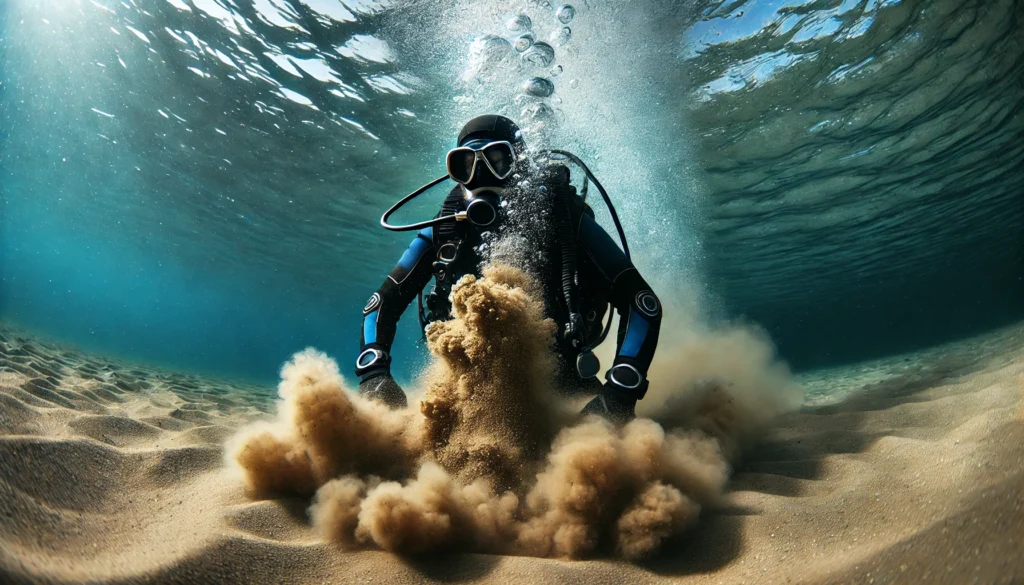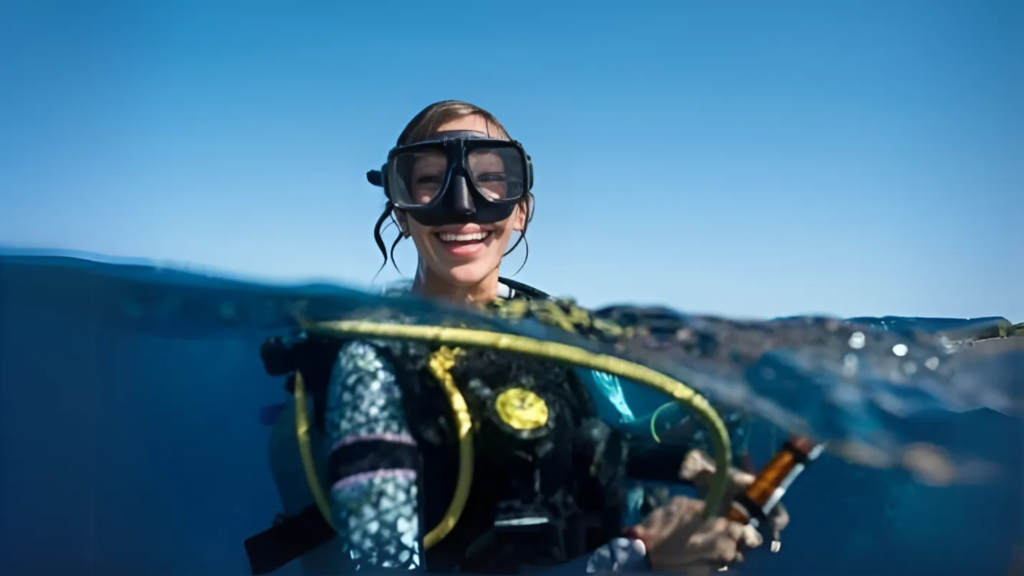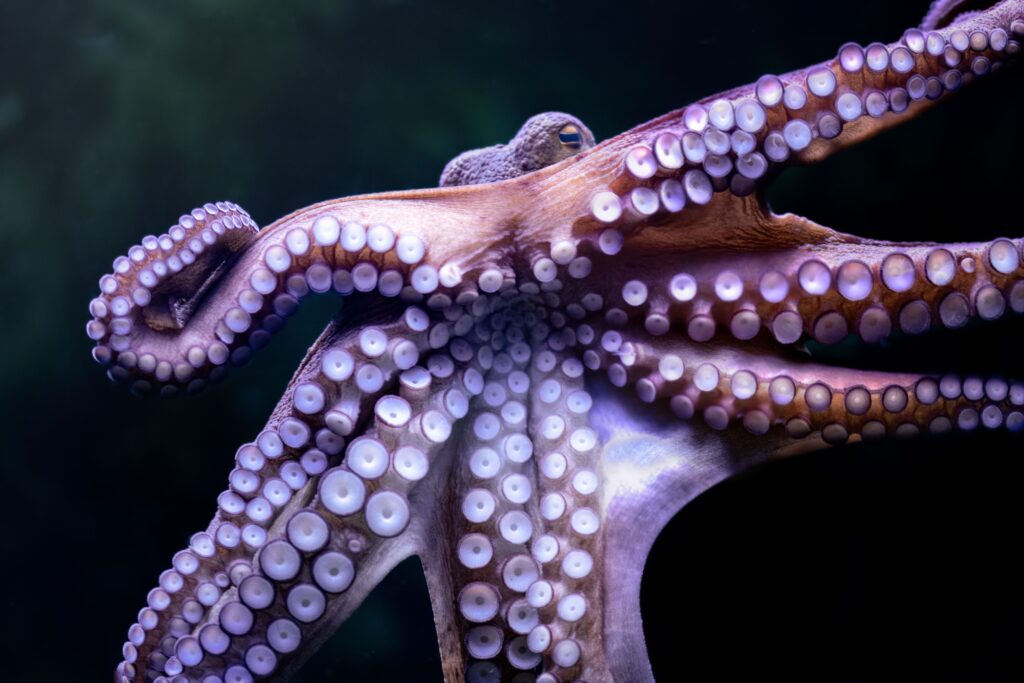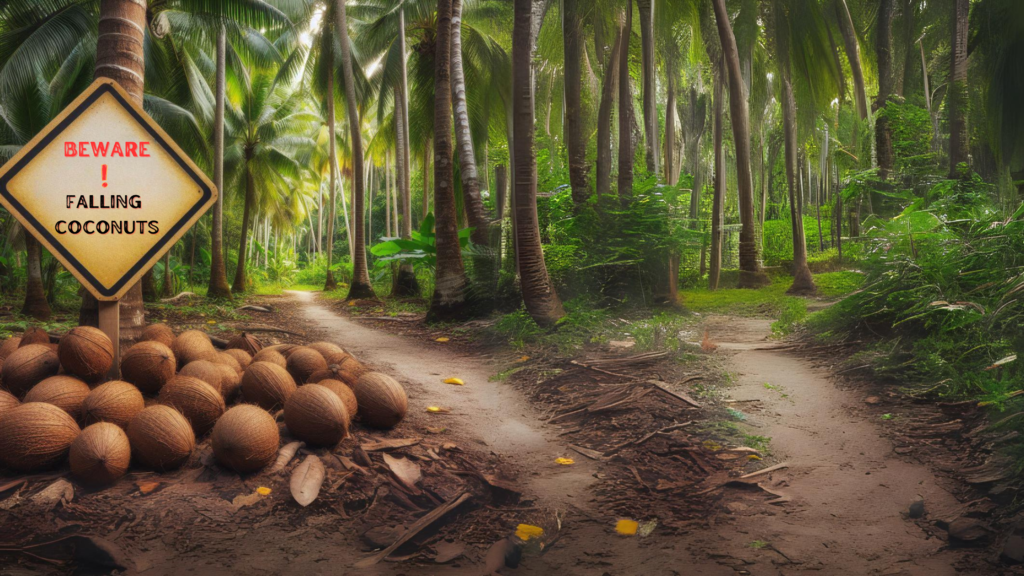Unlocking the secret to safe and fun scuba diving: why proper weighting matters
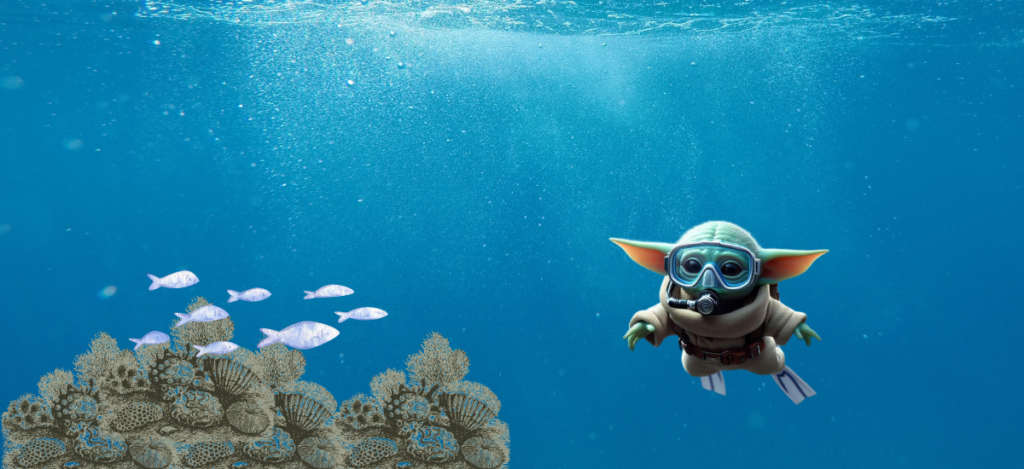
Scuba diving is like stepping into a whole new world of colourful fish, stunning coral and endless blue. But in order to really enjoy the magic that lies beneath the surface, you need to get your weights just right. Fear not – it’s easier than it sounds!
Here’s a fun and friendly guide to why it’s important to get your weights right. And how to do it for a fantastic dive.
The Yo-Yo effect: how to avoid bouncing up and down
Picture this for a moment: you’re diving, trying to enjoy the sights, but instead you’re bouncing up and down like a yo-yo. Not exactly what you signed on for, is it?
This is what happens when you’re carrying too much weight. Your BCD has to work overtime to keep you neutrally buoyant, and before you know it you’re bobbing up and down like a balloon at a children’s party. It’s exhausting and eats up your gas supply faster than you can say “scuba!”.
Some divers add extra weight to make sure they can descend more easily, and stay down without extra effort. But here’s the thing: being overweighted can lead to surprising ascents that are more like launching a rocket than gliding like a fish. Sure, the correct amount of weight could make the descent a bit slower, but once you’re down, you’ll be swimming effortlessly without having to have your BCD overly inflated.
Choosing your weighting system: it’s like picking an outfit
Just like choosing the perfect outfit for the day, picking the right weighting system is key to feeling comfortable and confident underwater. Here’s what you’ve got to choose from:
Weight belts: these are like the trusty jeans in your closet—classic and adjustable, to fit just right. You can distribute the weights where you need them, and they’re easy to tweak as you go.
Integrated weight pockets: think of them as the pockets on your favourite jacket – handy and right where you need them. Built into your Buoyancy Control Device (BCD), they’re super practical for quick adjustments and perfect for staying streamlined. A word of warning: these pockets must be securely fastened and always checked, as they have a bad tendency to fall to the seabed if they are not properly placed. This can endanger or interrupt the dive.
Backplates and wings with weight pockets: This setup is for the fashion-forward divers out there. It’s sleek, balanced, and totally customisable, giving you that chic, streamlined profile as you glide through the water.

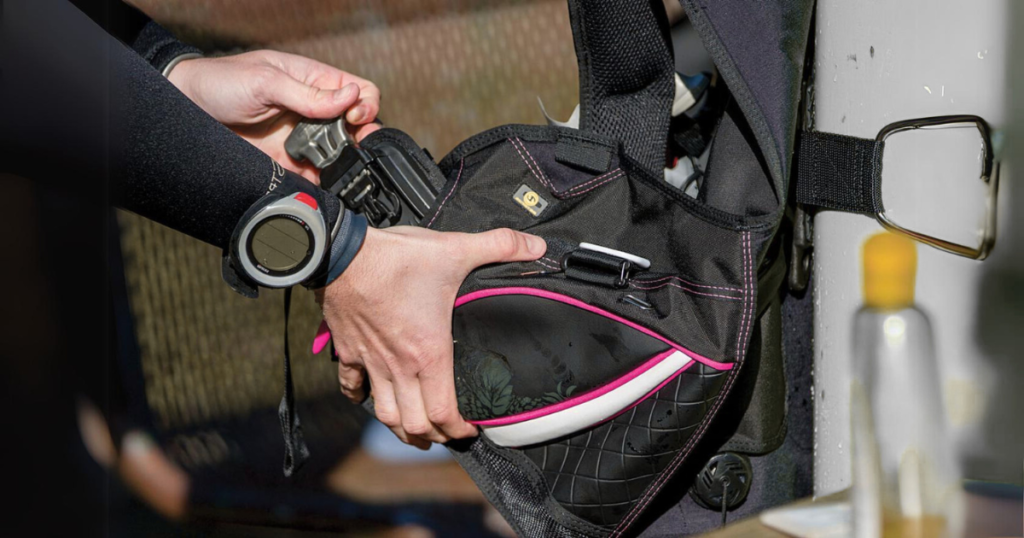

Mastering your BCD: your underwater bestie
Your BCD is like your underwater best friend – it is there to help you, but you need to know how to use it. Get comfortable with inflating and deflating it, and don’t forget to find and practise using the overpressure valves. The better you get at using your BCD, the less you’ll have to think about it during the dive, leaving you free to enjoy the view (and avoid the Yo-Yo effect!).
Key to Effortless Navigation and Safe Ascent
Proper weighting helps you glide through the water like a sleek dolphin, reducing gas consumption thanks to a better streamlined position. Less swimming effort and minimal BCD usage mean you can enjoy your dive without feeling like you’re in an underwater workout class! Getting your weighting right is like finding the perfect balance on a seesaw – it’s crucial for maintaining control of your underwater position and safely managing your ascent rate at all depths. This is essential to avoid the risk of decompression sickness (DCS).

In control, you must always be, during the dive. Let the equipment take over, you cannot.
The weights puzzle: know what you’re packing
You’ve just had an amazing dive and want to replicate that perfect buoyancy on your next trip. Saying “I used some weights” or “I had 4 pieces” isn’t going to cut it. Dive centres often provide you with weights, but they can vary in both size and heft.
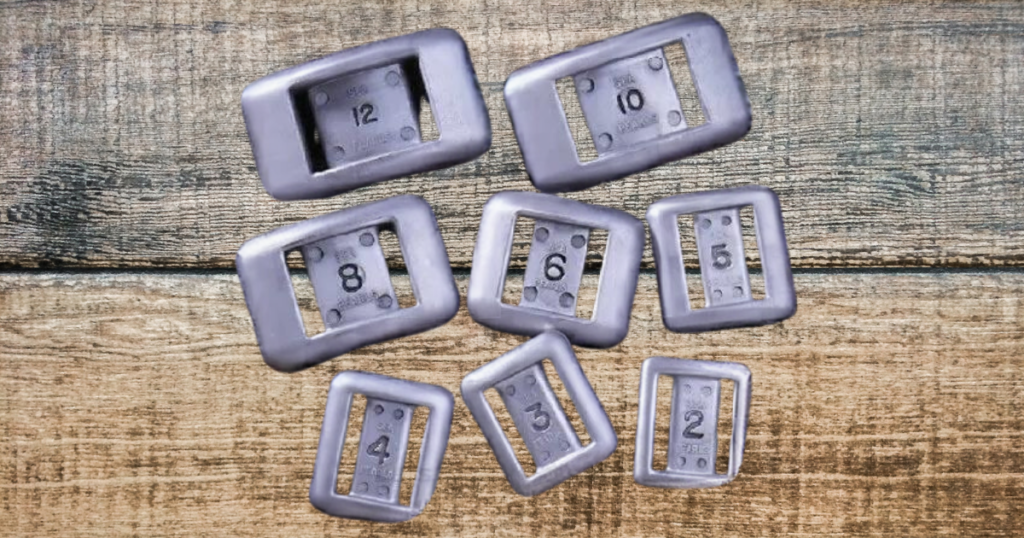
Make it a habit to note the exact amount of weight you used in your logbook. Include details about your wetsuit, tank and dive conditions. It’s like creating a recipe for the perfect dive – follow it next time for guaranteed success!
Aluminum vs. steel cylinders: the scuba weight debate
When it comes to scuba diving tanks, not all are created equal. They come in different sizes and it’s a bit like the difference between carrying a lightweight rucksack or a heavy duffel bag with you. Aluminium tanks are slightly bulkier, but will tend to get more buoyant as the gas is consumed. Steel cylinders are usually heavier and may need less extra weight. Remember that the weight of your tank (when empty) will contribute to the total buoyancy of your pack. Before you go on a dive, take a look at the markings on your tank – they will give you an idea of its weight and capacity. Knowing this will help you fine-tune your weighting and avoid any underwater surprises.
The weight test: are you ready to dive?
Here’s a little trick to make sure you’ve got your weighting right: at the end of your dive, when your cylinder will be lighter due to your gas consumption, see if you can make your safety stop, neutrally buoyant, with your BCD completely deflated at 5 metres. If you manage to float like a pro, congrats – you’ve nailed it! A neutral buoyancy with minimum BCD use is the golden ticket to an easy, breezy dive.
Dive wisely, dive happily
Getting your weights right isn’t just about safety – although that’s super important – it’s also the secret to fun, relaxed diving. By avoiding the Yo-Yo effect, understanding the difference between an aluminium and a steel tank, and keeping an eye on your weight setup, you’ll be diving in trim like a pro in no time. So take the time to get it right and you’ll enjoy longer, more enjoyable dives.
Take a look at the NovoScuba LogBook – it’s so well designed and easy to use, you’ll be hooked on sharing your dives with your buddies and peers on social media!
Happy Diving from the NovoScuba team! And may the Trim be with you!


